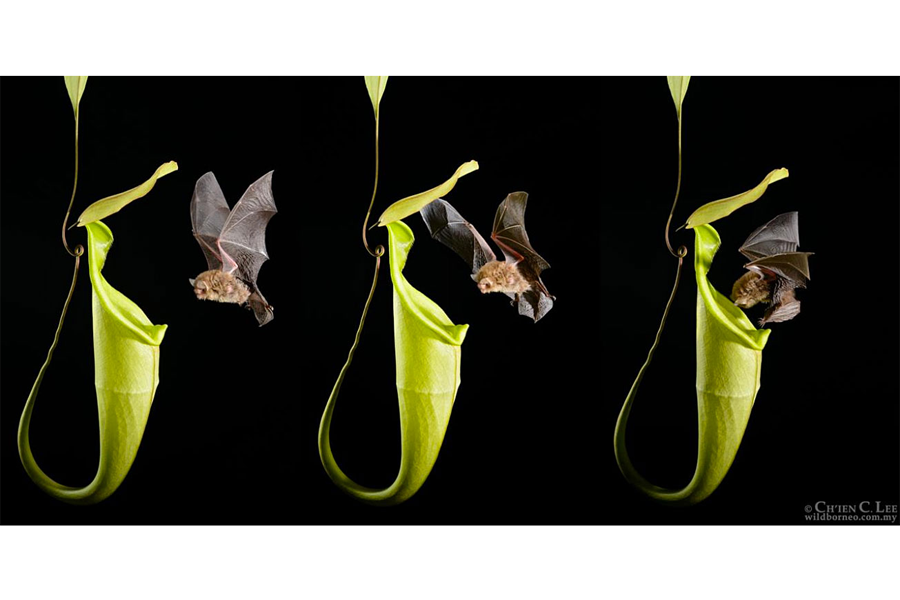How a plant species communicates with bats
Loading...
Why digest your own food when you can get another organism to do it for you?
That logic appears to be part of the driver behind one tropical pitcher plant’s unusual relationship with bats.
Native to the forests of Borneo, Nepenthes hemsleyana feeds on bat guano, which provides the plant with all the nutrients it needs, minus the hassle of digestion. To that end, N. hemsleyana has developed special structures that reflect bats’ ultrasonic calls back to them – an ability that helps the plant attract bats to roost in its pitcher so that it can feast on the animal’s feces, a new study has found.
“With these structures, the plants are able to acoustically stand out from their environments so that bats can easily find them,” Michael Schöner, a lead author of the study and a biologist at Germany’s University of Greifswald, said in a statement. “Moreover, the bats are clearly able to distinguish their plant partner from other plants that are similar in shape but lack the conspicuous reflector.”
The discovery provides greater insight on how mutualism – a relationship in which two organisms of different species benefit from each other – develops in the natural world, according to the researchers.
Unlike its carnivorous cousins, N. hemsleyana is not especially adept at catching insects. Yet scientists noticed that it somehow manages to thrive. Pursuing the mystery, Schöner and his team discovered that N. hemsleyana provides some insect-eating bats with a spacious, stable, and parasite-free roosting spot.
In return, the bats fertilize the plant with their feces, the researchers discovered.
But the relationship doesn’t stop there.
In their study, published in the journal Current Biology’s July issue, the researchers found that N. hemsleyana has a special structure – what the scientists called a reflector – that efficiently echoes acoustic signals over a wide area. The signals are specific to the bat species Kerivoula hardwickii, making it easier for the bats to find their partner plant.
“[The] bats had a high affinity to pitchers with intact reflectors … [and] pitchers with enlarged reflectors were found faster in the cluttered environment and were approached more often,” the researchers wrote. “This suggests that natural selection could act on pitchers to develop larger reflectors, leading to more bat visits and hence a higher nutrient intake.”
“Carnivorous plants in general have already solved the problem of nutrient deficiency in a very unusual way by reversing the ‘normal system’ of animals feeding on plants,” Dr. Schöner said.
“It is even more astonishing that in the case of N. hemsleyana the system is taking a new turn. While N. hemsleyana reduced many insect-attracting traits, it obviously exhibits some traits that are highly attractive for a species that provides the plants with nutrients without being digested by the plant itself,” he added.






